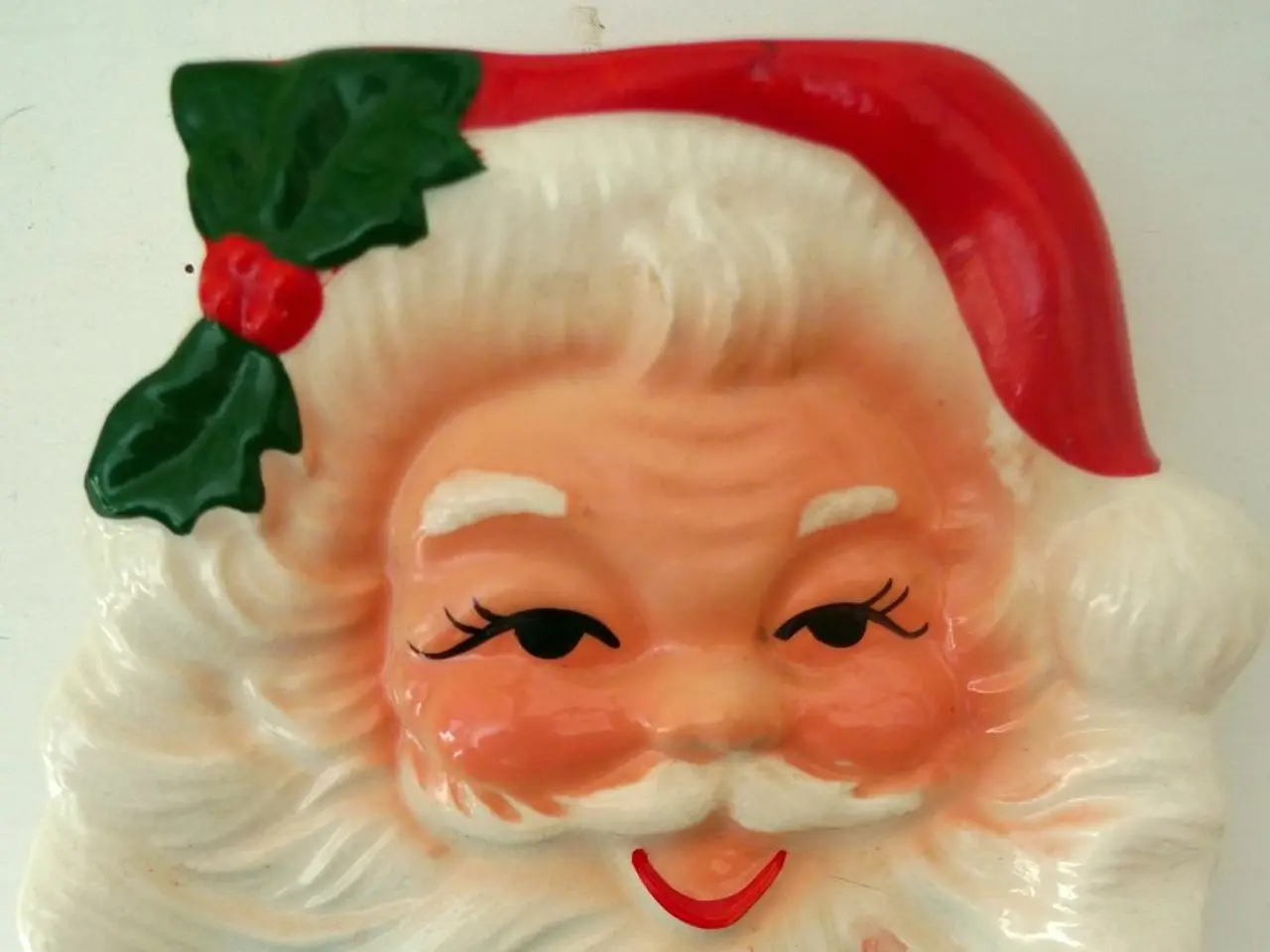Santa's Traditional Sleigh Journey May Face an End!
For centuries, Santa Claus has been a symbol of joy and generosity, delivering presents to children around the world. However, his unique lifestyle may come with hidden health risks that are worth examining.
Santa's global mission exposes him to numerous health risks, from extreme cold to respiratory hazards. Prolonged or repetitive exposure to very cold environments can lead to hypothermia, frostbite, and increased cardiovascular strain. This is particularly concerning for Santa, considering the North Pole's frigid temperatures[1].
Besides cold, the air Santa breathes may not be as pristine as one might expect. Crawling down chimneys filled with soot introduces serious respiratory hazards. Prolonged exposure to soot increases the risk of respiratory diseases and certain cancers[1].
While Santa is often depicted enjoying festive spirits, chronic alcohol intake increases risks of liver disease, cardiovascular problems, and can exacerbate respiratory illnesses. Combined with his dietary habits, this poses severe cardiovascular risks for Santa[1][2].
Santa's dietary habits, characterised by high fats and sugars, put him at risk for obesity, type 2 diabetes, and metabolic dysfunctions. His weight, concentrated around his waistline, further compounds these health risks[1][2].
Santa's red cheeks may indicate rosacea, a chronic skin condition. This condition can be exacerbated by factors such as alcohol consumption and harsh winds[3]. Constant exposure to cold and dry air can cause skin dryness, irritation, and conditions like eczema or frostbite on exposed areas such as the face and hands[1].
In an effort to promote healthier traditions, a call for safer practices suggests offering healthier snacks like oranges and water instead of alcohol for Santa. A tube of sunscreen could help protect Santa from the harsh Arctic conditions, further mitigating his skin challenges[4].
In conclusion, Santa Claus's lifestyle—marked by significant cold exposure, obesity, possible alcohol use, and respiratory/environmental hazards—carries health risks including cardiovascular disease, chronic respiratory impairment, skin conditions, and metabolic disorders. Protective strategies addressing cold exposure, maintaining a healthy weight, moderating alcohol use, and minimising respiratory irritants are essential to mitigate these risks.
[1] Occupational Health and Safety Administration (OSHA) [2] American Heart Association [3] British Association of Dermatologists [4] National Institutes of Health (NIH)
- Santa's workplace-wellness may be compromised by the harsh, cold temperatures at the North Pole, raising concerns for conditions such as hypothermia, frostbite, and increased cardiovascular strain.
- The soot-filled air Santa encounters crawling down chimneys can lead to serious respiratory hazards, increasing the risk of respiratory diseases and cancers.
- Santa's dietary habits, high in fats and sugars, can contribute to obesity, type 2 diabetes, and metabolic dysfunctions.
- Santa's red cheeks and their association with rosacea, a chronic skin condition, can be exacerbated by factors like alcohol consumption and harsh winds.
- Constant exposure to cold and dry air can cause skin dryness, irritation, and conditions like eczema or frostbite on exposed areas like the face and hands.
- Prolonged or repetitive exposure to very cold environments as well as his dietary habits and alcohol intake pose severe cardiovascular risks for Santa, increasing the likelihood of liver disease, cardiovascular problems, and exacerbating respiratory illnesses.
- To promote healthier traditions, suggestions include offering healthier snacks like oranges and water instead of alcohol, and using sunscreen to protect Santa from the harsh Arctic conditions, helping to mitigate his skin challenges.




